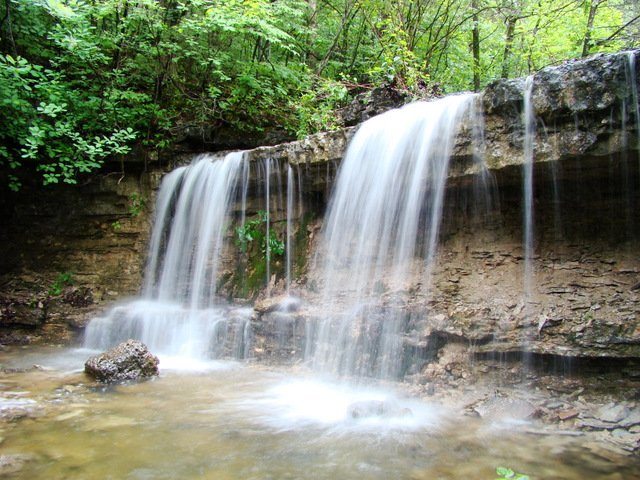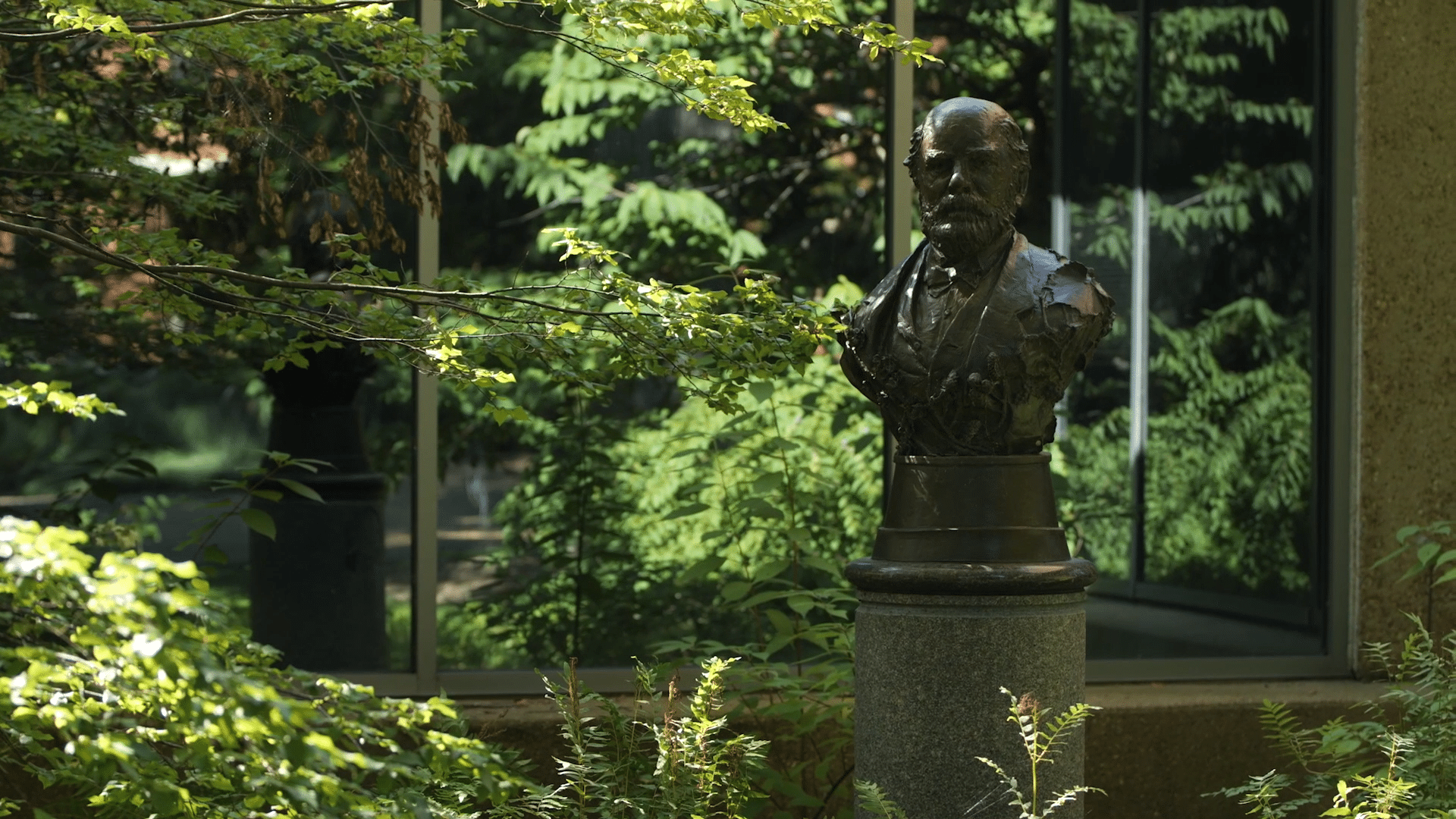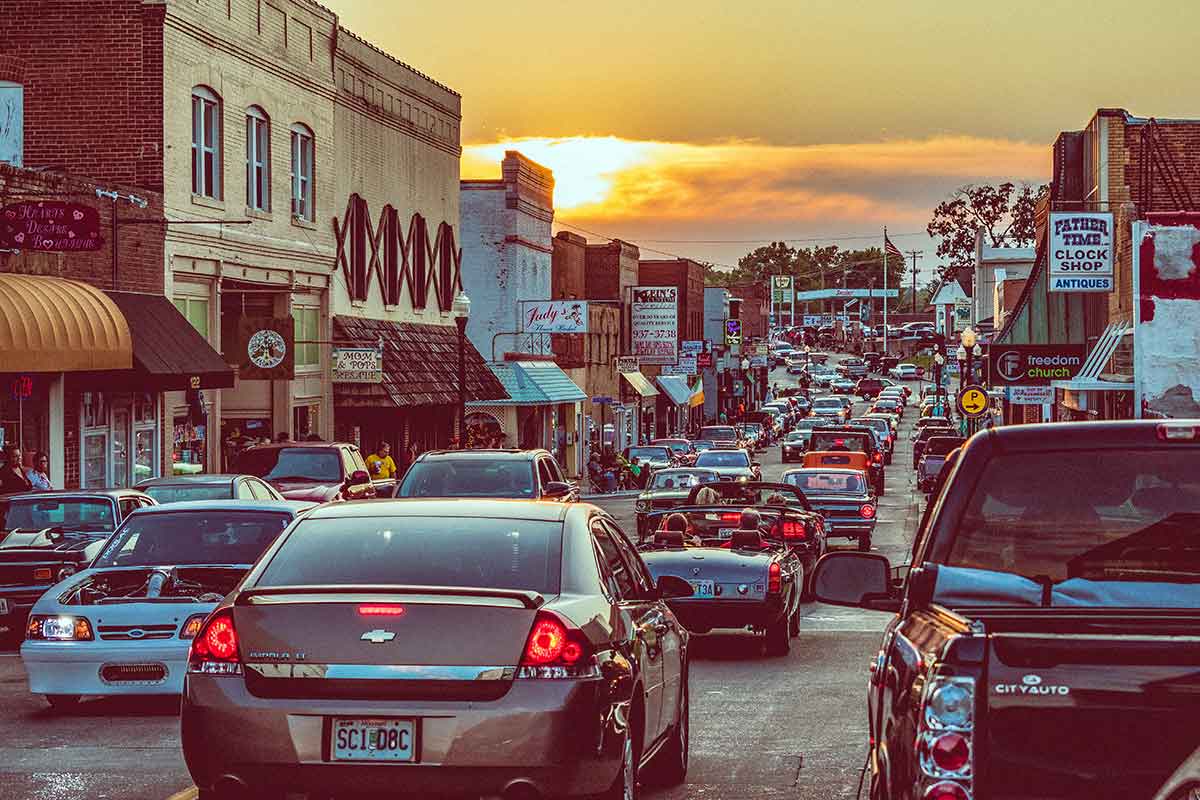No other immigrant group has had a greater influence on Missouri than the Germans. They influenced our agriculture, our arts, our sciences, and our beer. Their passionate antislavery position helped keep Missouri in the Union during the Civil War. At the time, more than half of all immigrant residents here were from German states.
From St. Louis to Indian Grove, Missouri has an officially designated German Heritage Corridor. It encompasses sixteen counties on both sides of the Missouri River, from the confluence with the Mississippi and through Lafayette and Chariton Counties. Lafayette County doesn’t touch the Missouri River in our graphic, but indeed the river turns back south and runs along much of the county’s border. It’s part of the Corridor, too, especially because of Concordia’s strong German heritage.
German immigrants had come to the United States before 1829, but they swarmed to Missouri starting then because of three things: First, Gottfried Duden’s 1829 Report on a Journey to the Western States of North America and other similar travel stories described Missouri, at that time the “Far West” of our country, as a new idyllic vaterland (homeland), with cheap land and rich resources. Second, the failed German revolution in 1848 also spurred many participants to flee their home country. Finally, industrialization had also begun undermining the strong economic position of guild artisans and skilled workers in trades and handicrafts, and the Far West seemed to beckon with opportunity. The rolling hills and rivers reminded the early immigrants of their homelands, and their letters home spurred yet more chain migration.
A new book, Explore Missouri’s German Heritage, by W. Arthur Mehrhoff, published by Missouri Life Inc., probes this history and influence on our state and highlights more than eighty places to explore this heritage today. What follows are excerpts from the book, edited for length.
Wir feiern und unterstützen unser Kulturerbe!
(We celebrate and support our cultural heritage.)
Geh und erforschel!
die Hallenhaus
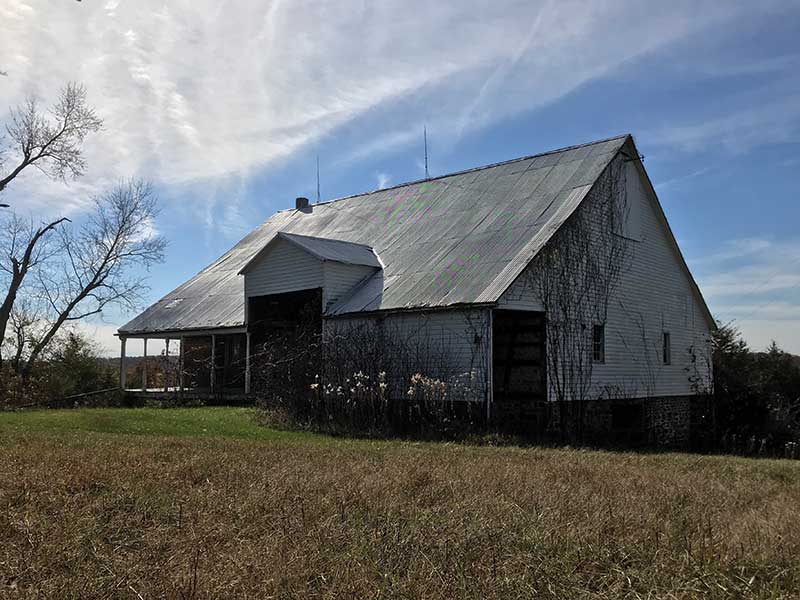
The historic Pelster Housebarn still stands half-hidden in the heart of the German Heritage Corridor, nestled into a hillside south of New Haven in rural Franklin County. It is a splendid survivor of an Old World building style that integrated house and barn into one structure.
Constructed by German Lutheran immigrant Friedrich Wilhelm (William) Pelster (1825–1908), the housebarn sheltered the Pelster family, livestock, and its farm work all under one roof. The superstructure rests in typically solid German fashion on a massive, mortared, twenty-four-inch-thick stone foundation, fully visible from the rear and almost completely banked into the hillside on the front. Weatherboarding masks its uniquely German Fachwerk (half-timbered) construction, in which the wooden wall framing—studs, cross beams, and braces—are exposed to the outside, while plaster, brick, or stone fill the spaces between the timbers. A steeply pitched gabled roof covers the structure. The roof, originally covered with wooden shingles, sloped down the front to shelter a porch on the house end and an enclosed storage area on the other.
Family history suggests that the front room of the second level served as the “parlor” to welcome visitors, while the middle room served as both family living space and bedroom. A back room served as a kitchen, cupboard, and storage space. A Diele (a broad central hallway) separated the house section from the grain and hay storage areas. Tongue and groove planks, originally fastened with handcrafted wooden pegs, covered the floor. Traditionally, the Diele would have been used for threshing as well as unloading hay from wagons.
According to the Missouri Agri-cultural Census, in 1870 Pelster owned six horses, five milk cows, four other cattle, twenty-four sheep, and eleven swine. In today’s planning parlance, the Pelster Housebarn was the ultimate mixed-use development project.
The Family
Pelster came to central Missouri in that wave of German immigrants seeking refuge or fortune, or both, in America between the 1830s until the Civil War. Emigrating from the village of Dissen, near Osnabruck, Hannover, in northern Germany, Pelster arrived in Missouri in 1842 with his wife Maria Katherine and sons Rodolph and Wilhelm. Strikingly familiar, a hamlet named Dissen lay a few miles north of the Pelster farm.
Like many other German immigrants in rural Missouri, the Pelsters constructed a temporary log dwelling before constructing a more permanent (and more German) dwelling.
While no written documentation clearly dates the Pelster Housebarn construction, family said it began on the eve of the Civil War but was delayed until after the war. Franklin County tax assessment records show Pelster’s property value rose significantly in 1867, supporting the family story. In true Missouri German custom, Pelster family members occupied the housebarn for more than sixty years.
Farm Life
Farm life in the German Heritage Corridor changed very slowly while the Pelster family occupied the housebarn. With the exception of St. Louis and St. Charles proper, the German Heritage Corridor remained almost entirely rural and remote until well into the 1900s. The Highway 19 bridge across the Missouri River did not open until 1931, while the bridge over the Missouri River at Washington did not open until 1936. The few state roads throughout the counties of the German Heritage Corridor consisted of gravel, while the county roads were dirt. Many properties were only accessible by two-track dirt trails for horses and wagons, and the trails frequently followed the creeks.
The typical rural household in the German Heritage Corridor tilled and toiled through a never-ending succession of long days. They planted, raised, and harvested their crops while also planting gemusegarten (kitchen gardens) for fruits and vegetables, preserving the food that was not consumed fresh for later consumption.
Many of them planted, raised, and harvested flax, which was then retted, broken, and combed with a succession of ever-finer combs to separate the linen fibers from the broken flax stalks, then spun the linen into thread, wove the thread into cloth, and made their own linens and clothing.
They raised chickens, pigs, sheep, and cattle for meat, then butchered and cured meat or made sausage. They made soap, cut wood, built fences, and baked bread. In addition, many Missouri German families raised grapes and made wine, while many others practiced a trade such as furniture-maker, wheelwright, carpenter, blacksmith, cobbler, or shoemaker.
Like the Pelster Housebarn itself, Missouri German farm families integrated many activities into one household for self-reliant freedom.
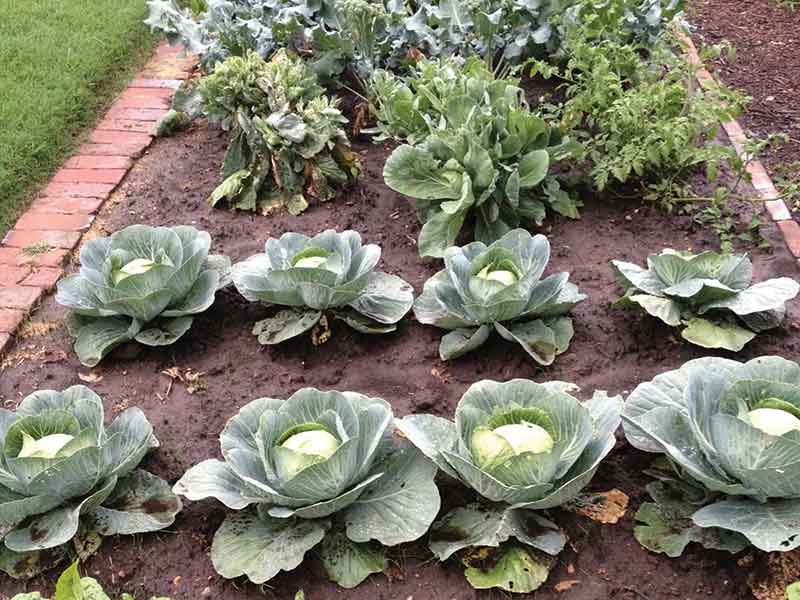
Old World Traditions
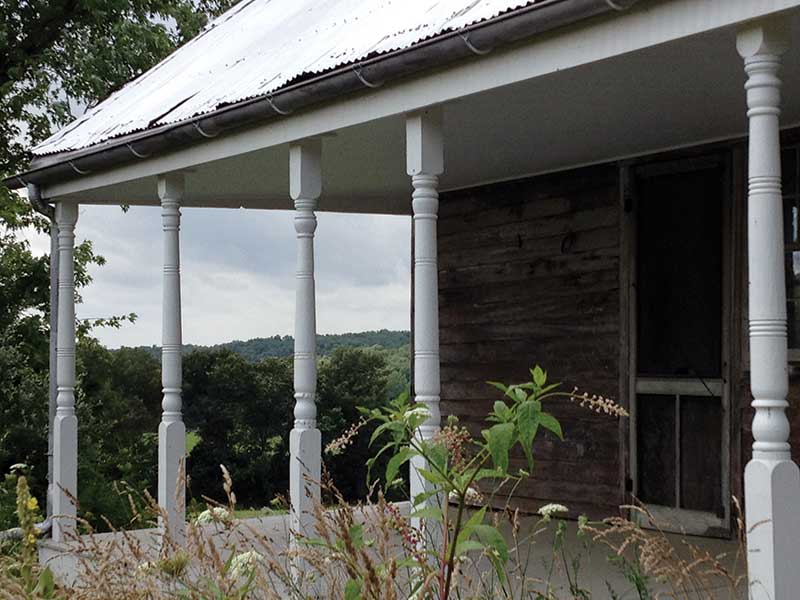
The German immigrants often built their own buildings, as they were grounded in an ancient European building tradition. In Holland and northern Germany in the fourteenth century, for example, such structures were built to shelter humans and livestock, often without partitions between living and stabling areas. Known in Holland as the los hoes and in Germany as the Hallenhaus, the house section occupied one end and the barn section the other of these long houses. This basic type, with its centuries of regional variations, was still being built in northern Europe into the 1900s. Although the Pelster family hailed from northern Germany, their housebarn more closely reflects the kind of housebarns built in Switzerland and the southern Alpine region of Germany, banked into the slope of a hillside.
At the time of its 1978 National Register of Historic Places nomination and acceptance, the Pelster Housebarn was one of only a dozen or so remaining housebarns in America. Wisconsin, Minnesota, Nebraska, North and South Dakota, and Texas all still possessed some type of housebarns. The Pelster Housebarn compared most closely to the Wisconsin examples, also built by German immigrants. However, the Pelster Housebarn was intended as a permanent dwelling, while the Wisconsin examples were replaced by detached dwellings.
The Pelster Housebarn exemplifies unique Fachwerk construction. Massive white-oak timbers, hewn to desired size and shape with a broad axe, form the framing. All joints are expertly mortised, tenoned, and secured with wood pegs rather than nails. Noggings of limestone and plaster laid between the framing members provided insulation. In keeping with old-world traditions, each section of the frame bears a chiseled Roman numeral, designating its place in the structure. Pieces were laid out on the ground and assembled, then each section, or “bent,” was raised and individually braced while the next one was assembled.
The tradition of building housebarns rarely survived the sea change of immigrant culture to America. While common in Europe, where high land and construction costs made consolidation of farm enterprises in one structure secure and economical, the Far West of Missouri posed an entirely different set of circumstances. Abundant land, timber, and popular tastes worked against the housebarn style. Missourians already here turned up their noses at this “foreign” peasant custom.
Hillside siting, weatherboarding, a visible porch, and a gabled wagon entrance distinguish the Pelster Housebarn from other American housebarns.
Oktoberfests with Authenticity
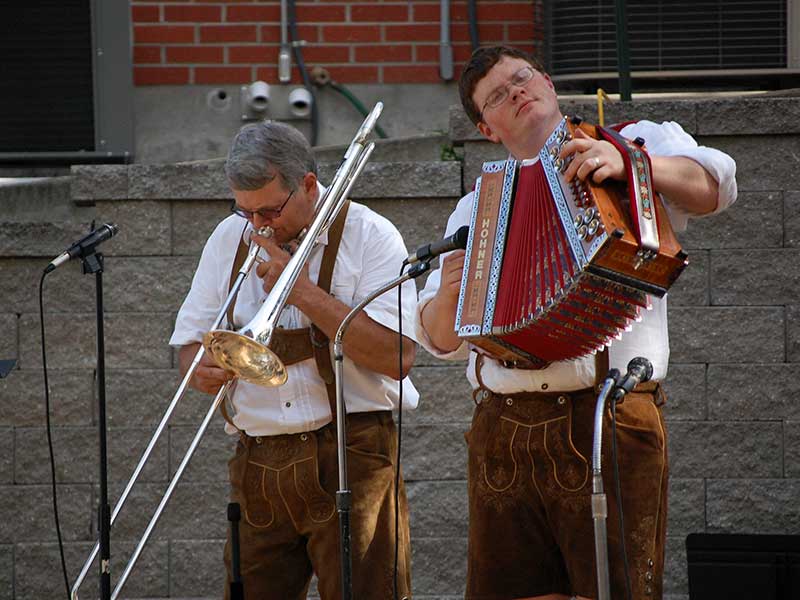
The Oktoberfest in Jefferson City is on the historic “Southside,” where the Germans settled. Separated from Jefferson City at first by Wears Creek and a hill, the communities connected when bridges over the creek were built. You can still hear accordions and polka music at the festival today.
- ANHEUSER-BUSCH BREWERY OKTOBERFEST features German music and entertainment, plus German-style beer and food. Games include barrel rolling and stein relays. September 20–22.
- JEFFERSON CITY’S OKTOBERFEST is hosted by the Old Munichburg Association. Live music, a beer and wine garden serving authentic German food, demonstrations, and other activities are on West Dunklin, Washington, and Broadway Streets. September 27–28.
- HERMANN OKTOBERFEST is a month-long celebration, with polka music, German food, and other activities every weekend of October.
- OKTOBERFEST IN COLE CAMP offers traditional German food, a wine and beer tasting, and antique farm machinery. September 28.
- SOULARD OKTOBERFEST takes place in the oldest continuously run farmers’ market west of the Mississippi, founded in 1779. Authentic German fare, a wine garden, and live German bands complement the bier hall. October 11–12.
- ST. CHARLES OKTOBERFEST is in Frontier Park along the Missouri River and next to the historic district. The festival features German music, vendors, food, and drink. September 27–29.
Urban Chestnut
The cofounder of Urban Chestnut Brewing Company in St. Louis grew up in Bavaria, where he apprenticed at a local brewery. Florian Kuplent spent time in Germany, England, New England, and finally at Anhueuser-Busch in St. Louis before helping launch Urban Chestnut in 2010. Kuplent points out that while Urban Chestnut doesn’t focus exclusively on German-style beers, it’s definitely part of the company’s roots. The handles of beer taps feature names such as Dorfbier, Oachkatzlschwoaf, and Stammtisch. The Urban Chestnut Brewing Company offers a free self-guided tour of the Grove Brewery and Bierhall. The tour takes visitors through the production process. You can also purchase a tasting with the self-guided tour, or you can book a free guided tour on Saturdays. Reservations are required because there are only twelve spots on the Saturday tours. The Urban Chestnut Bierhall is at 4465 Manchester Avenue, and the more traditional Biergarten is at 3229 Washington Avenue.
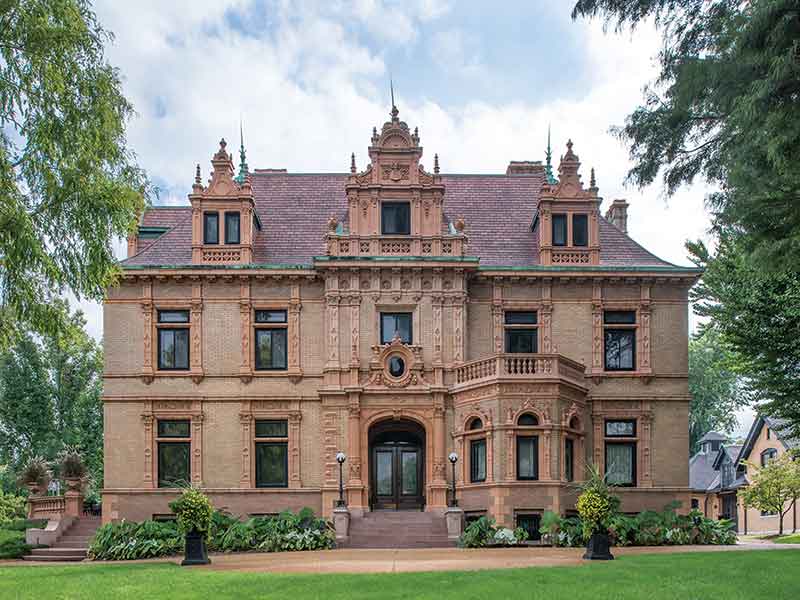
A National Landmark
In 1980 owners Harry and Jean Panhorst donated the housebarn to the Missouri Heritage Trust. While the state of Missouri now owns the housebarn and the land it sits upon, it cannot be seen by the general public. Cindy Browne, site administrator of the Deutschheim State Historic Site in Hermann, and others are working to preserve the housebarn, but the future of the Pelster Housebarn feels much less secure than its sturdy, traditional construction.
die Deutsche Kuche
A Huffington Post blog dealing with the highly popular local food movement in America on June 5, 2015, called kitchen gardens the latest, must-have kitchen tool. Today, anyone can visit an authentic kitchen garden at Deutschheim State Historic Site in Hermann.
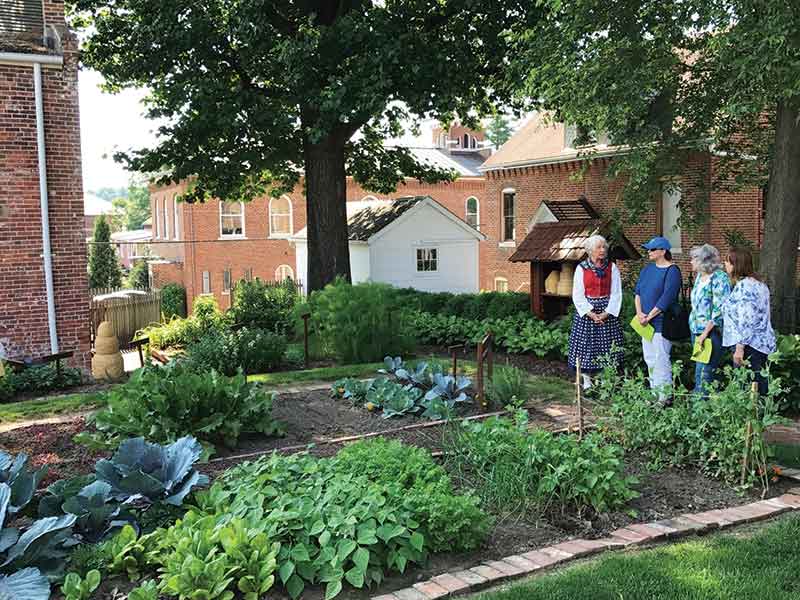
The four-square garden, long buried and forgotten for decades, has been identified, excavated, and restored to a highly productive working garden. The rectangular garden plot is subdivided into equal sections by wide paths that cross in the middle, just as they did in Germany dating back to the Roman occupation and medieval monasteries.
Heirloom varieties like those used by German immigrants grace the carefully tended plots of Deutschheim’s four-squares. Here you will find flowers such as harlequin marigolds or sweet alyssum planted among the garden vegetables; the flowers offer both beauty and practicality. Studies have shown marigolds discourage nematodes, for example, and sweet alyssum provides nectar for hoverflies, which feed on aphids.
The demonstration garden often features a site interpreter dressed in period costume and assuming the identity of a historical figure while answering visitor questions. Hermann’s popular annual June garden tour typically features the site as well. If your timing is particularly good, the dulcet tones of a hammered dulcimer or other period instrument might lure you to the four-square demonstration garden. Whatever attracts you there, it’s definitely worth finding your way to this highly significant Missouri German artifact.
Public records clearly indicate that German immigrants settling in Hermann preferred property lines with long plots of land and homes that fronted public sidewalks with gardens in the back. These long plots behind the homes, typically about 60 by 120 feet, were large enough to accommodate cisterns, generous gardens, and even small livestock. The Deutschheim State Historic Site’s 1840 Pommer-Gentner House is a perfect example of the home fronting public sidewalks with the gardens behind.
Middle class gardens shared this attitude of usefulness. In this respect they distinctly differ from the English middle-class model of the cottage (or cutting) garden primarily as a beauty spot. The further down the economic ladder one goes, the more yard space served utilitarian purposes.
German Americans also customized the flavor of vinegar with herbs and spices cultivated in the garden. The vinegar can be created from any number of sources, such as apple cider, beer, honey and water, whiskey and water, or vegetable juice. Homemade vinegar could then be used in the essential pickling process. Many people believed homemade vinegar tasted better than bottles purchased from a store, if a store was even available back then.
Root crops such as potatoes, turnips, carrots, and especially cabbage were also important household crops, although the four-square garden might contain only small amounts of those vegetables. The bulk of the household’s root crops might be cultivated in farm fields located at another site. Archival photos of nineteenth-century Hermann actually show vacant lots planted entirely in cabbage. The general rule of thumb was to provide one hundred heads of cabbage per person annually as a winter food allowance. A sturdy root cellar often supplemented the four-square garden.
Site administrator Cindy Browne notes, “So much of today’s organic methods are very old traditions that were abandoned in the twentieth century.”
The German Cookbook by renowned food writer Mimi Sheraton of The New York Times is widely considered to be the definitive authority on German cuisine. As Sheraton writes, “The German motto “gut Essen, gut Trinken,” (good eating, good drinking) belongs on the national coat of arms, along with the before-meal wish, Gesegnete Mahlzeit (blessed be your meal).
The Deutschheim four-square gardens are open daily, 10 am to 4 pm, April through October.
Fröliche Weihnachten
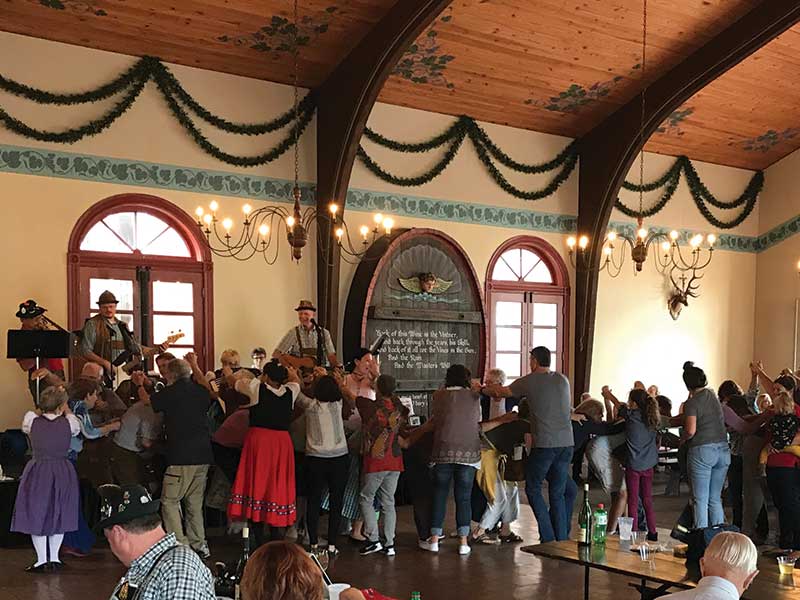
Feasts and festivals strongly reflect and still resonate with the natural and cultural heritage of Missouri Germans. And nearly every burg in Germany sets up a Kristkindlmarkt (Christmas market). Hardy visitors and shoppers can explore historic sites; browse through the colorful stands selling handicrafts, wooden toys, and glass ornaments; sample the glühwein (hot mulled wine), all kinds of fantastic cookies, and various hot nuts in a paper bag; or just savor the festive atmosphere and good spirits.
These fairs have proven so popular that other parts of the world have started copying, or reviving, the tradition. According to German World magazine, the Hermann Kristkindlmarkt offers one of the most authentic German Christmas markets in North America.

Deutschheim State Historic Site holds its annual Weihnachtsfest, a traditional nineteenth-century German Christmas celebration, during the first two weekends in December. During the festival, the historic Deutschheim Site decorates its historic 1840 Pommer-Gentner House with seasonal greenery and lamplights.
Weihnachtsfest also features traditional German music of the Christmas season in the piano-making workshop, which displays the beautiful 1830s pianoforte built by owner Charles Pommer back in Philadelphia before he came to Missouri.
Its historic rooms feature Christmas trees decorated with authentic German ornaments. An early type of artificial tree called Federbaume (feather trees) were made to resemble European firs, the preferred German Christmas tree symbolizing eternal life. On the practical level, their open shape makes displaying ornaments much easier. Feather trees are made from goose quills that have been dyed green and then wrapped with wire around wooden dowels so that the sheared feathers resemble pine needles. Feather trees were first made in the 1860s when the unlimited cutting of firs for Christmas decorating was outlawed in Germany.
However, not all Christmas trees stood on floors or tables. In some parts of Germany, Christmas trees actually hung from the ceiling (with care, of course), a custom that some immigrants brought with them to Missouri, which is recreated at Weihnachtsfest. A “tree” of boughs affixed to a framework creates the image of a lovely hanging tree, decorated with ornaments made of ribbons, straw, gilded walnuts, painted eggs, and paper ornaments or “scraps” that you would have found in the nineteenth century. Scherenschnitte, paper ornaments artfully cut by hand with scissors, also decorate the glamorous feather trees.
One highlight of Weihnachtsfest includes sampling the delicious culinary custom of traditional German Christmas cookies, including springerle, Lebkuchen, and zimmerschied. The site’s Weihnachtsfest gift shop not surprisingly offers springerle molds and rolling pins, recipe books, imported German pop-up cards, and books for visitors looking for unique Christmas gift-giving opportunities.
In addition to the displays and museum guides at Deutschheim State Historic Site, other venues such as the Festhalle, The Mill, and the outdoor Hofgarten of the local Hermannhof district all hold festive activities involving this annual holiday celebration.
The Pommer-Gentner House is decorated in the German tradition. Browne noted that she chose to hold Weihnachtsfest at the house because it directly and elegantly links Philadelphia to Hermann. The Philadelphia German Settlement Society sent settlers to Hermann, and Philadelphia was where the first Christmas tree in the United States was cut.
Fröhliche Weihnachten!
Stone Hill Winery and Hermannhof Winery
Stone Hill Winery was established in 1847 and grew to be the second-largest winery in the United States. The wine produced there was known around the world and won gold medals in eight world fairs, including one at Vienna, and by 1870, the winery was shipping 1.4 million gallons of wine per year. After Prohibition, the wine cellars were converted to produce mushrooms, until 1965 when Jim and Betty Held bought the winery. In fact, the Helds are often credited with reviving Missouri’s wine industry. Today, Missouri has more than 130 wineries.
Stone Hill’s annual production now is about 300,000 gallons of wine. Listed on the National Register of Historic Places, the winery offers free guided tours, which include seeing the historic cellars. You can also enjoy tastings or dining in the restored carriage house in a restaurant that specializes in German and American cuisine paired with Stone Hill wine.
Hermannhof was built between 1848 and 1852 as a brewery, and its ten stone cellars and brick building are on the National Register of Historic Places. Prohibition brought a halt to this successful operation’s beer making, but the Jim Dierberg family bought the cellars in 1974 and began restoring the building. Today, all of the cellars hold premium wine. You can tour the cellars, located at the eastern edge of Hermann on Highway 100.
Historic Hermann Museum at the German School
The German School building, built in 1871, served as Hermann’s elementary school until 1955. Classes were taught in both English and German for much of its history. Today, the building serves as the Historic Hermann Museum. The town clock atop the building tolls the time every hour. Volunteers wind the clock by hand twice a week, and the clockworks can be seen on the second floor. The museum has seven rooms of collections, including the Kinder Room, full of antique toys, a handmade carousel, school desks, and old dollhouses. The River Room has a replica of an early pilot house, models made by riverboat captains, and other Missouri River artifacts. The museum is at the corner of Fourth and Schiller Streets.
About the book, Explore Missouri’s German Heritage
168 pages, $34.99, about 85 places to explore, more than 160 photographs or illustrations.
Purchase the book here, or call 1-877-570-9898 to order.
Related Posts
7 Missouri Waterfalls
A haven for gorgeous scenery, the Ozarks is brimming with stunning waterfalls. April and May are great months to enjoy our waterfalls, as water flow is at its peak from spring showers.
‘Exploring Missouri’s German Heritage’ Documentary Premieres
Missouri Life Media film debuts at Stone Hill Winery. Tickets include a special gift bag that includes two books, Little Germany on Missouri and Explores Missouri’s German Heritage.
Revitalizing Missouri Downtowns
Here’s how Missourians are working together to revitalize downtowns across the state.

